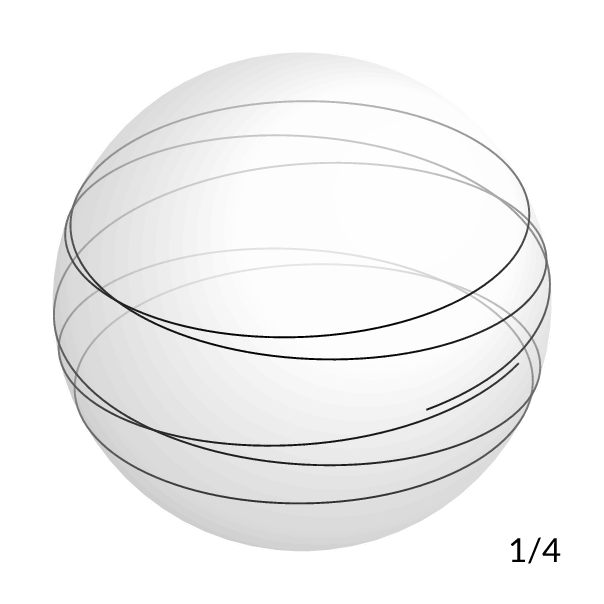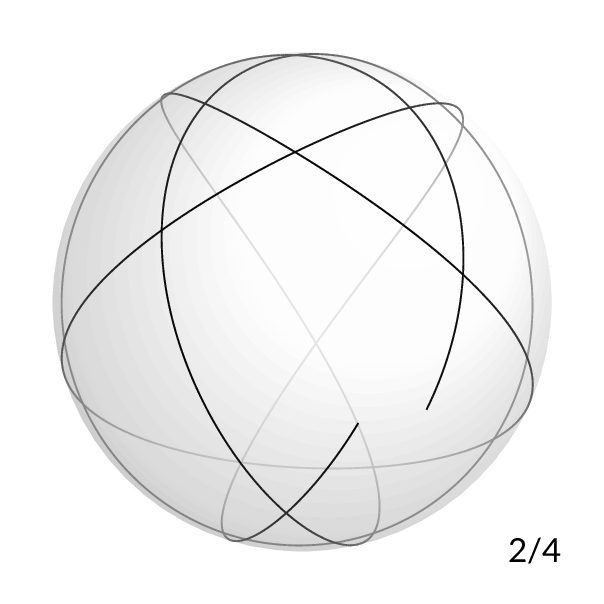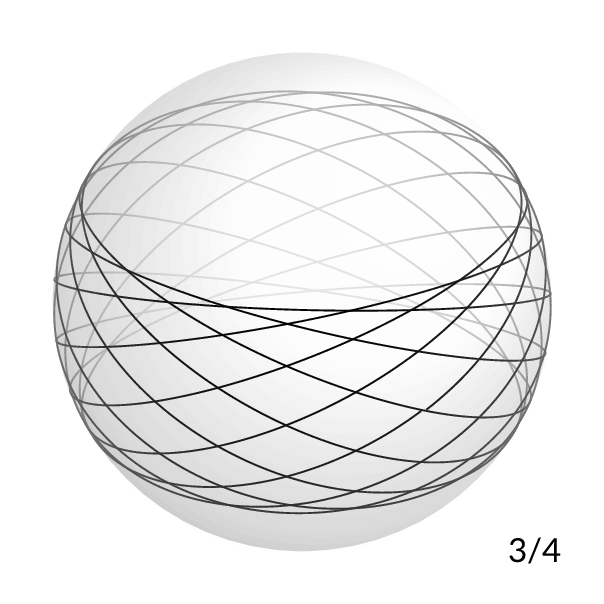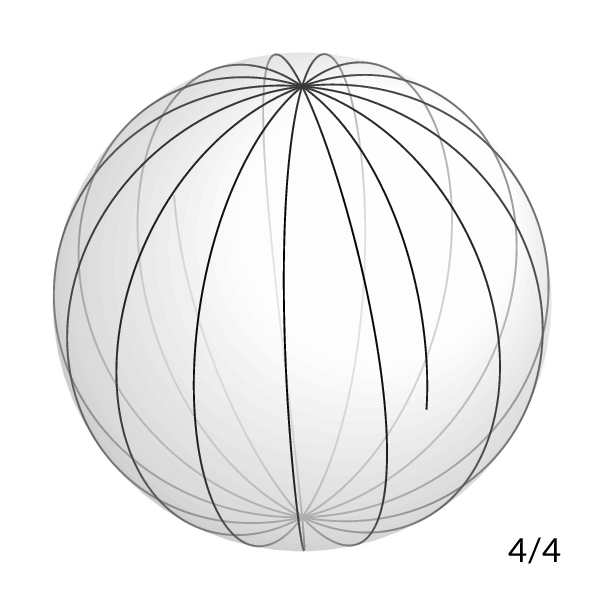Research
My research lies in the area of General Relativity and Gravitation. I am interested in exact solutions of general relativity, particularly those describing black holes.
Highlights
Spherical orbits around a Kerr black hole



 When a particle orbits around a rotating Kerr black hole, it can trace out a complicated, non-planar trajectory. A special class of these orbits lie on spheres of constant radius, and are known as spherical orbits (four examples are displayed here). I have studied the properties of such spherical orbits in detail, for both photons (in a 2003 paper) and time-like particles (in a 2021 paper). Spherical photon orbits are important for a detailed modelling of the appearance of a Kerr black hole (e.g., in the movie Interstellar, as Kip Thorne explains in his book The Science of Interstellar), while spherical timelike orbits are important in the study of gravitational waves from so-called extreme mass-ratio inspirals. To date, these two papers have received more than 300 and 100 citations, respectively (data from Google Scholar).
When a particle orbits around a rotating Kerr black hole, it can trace out a complicated, non-planar trajectory. A special class of these orbits lie on spheres of constant radius, and are known as spherical orbits (four examples are displayed here). I have studied the properties of such spherical orbits in detail, for both photons (in a 2003 paper) and time-like particles (in a 2021 paper). Spherical photon orbits are important for a detailed modelling of the appearance of a Kerr black hole (e.g., in the movie Interstellar, as Kip Thorne explains in his book The Science of Interstellar), while spherical timelike orbits are important in the study of gravitational waves from so-called extreme mass-ratio inspirals. To date, these two papers have received more than 300 and 100 citations, respectively (data from Google Scholar).
-
A new asymptotically flat gravitational instanton
Gravitational instantons are solutions to the Einstein equations with Euclidean signature that are completely regular. They have applications in both physics (such as quantum gravity) and mathematics (such as differential geometry). Well-known examples of asymptotically flat (AF) gravitational instantons are the Euclidean Schwarzschild and Kerr solutions. Because of the black-hole uniqueness theorems, it was conjectured in the late 1970s that no other AF gravitational instanton exists. This conjecture stood until 2011, when my post-doc Yu Chen and I unexpectedly discovered a new AF gravitational instanton. It was followed up by another paper in 2015, in which we found a (singular) one-parameter generalisation of the above solution. Because of their unusual and novel properties, these solutions have been the subject of much attention by mathematical physicists (for a recent review of gravitational instantons, see the article by Dunajski).
-
A new form of the C-metric
The C-metric is a solution to the Einstein equations, discovered in 1918, that describes a black hole undergoing a uniform acceleration. The traditional form of this solution, originating in 1970, contains a cubic structure function. This makes it rather cumbersome to solve for its roots and hence analyse the solution. In 2003, my student Kenneth Hong and I found a coordinate transformation that makes the cubic structure function explicitly factorisable in terms of simple roots. In this new form, the C-metric becomes very elegant and simple to analyse. In 2004, we extended this idea to obtain a new form of the rotating C-metric. Today, this new form of the (rotating) C-metric has become the standard form in which it is written and studied (see, e.g., the monograph by Griffiths and Podolský).